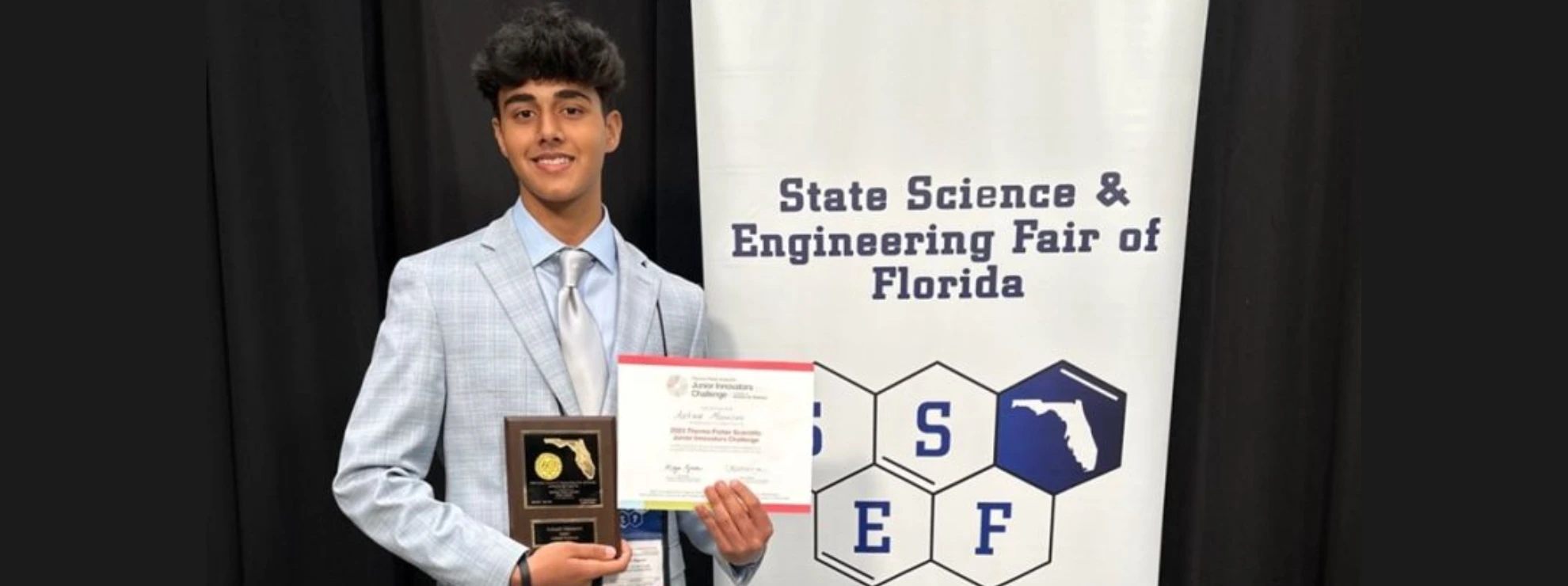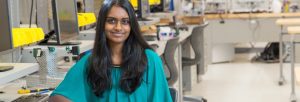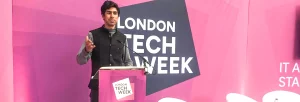(January 19, 2025) On his first visit to an apiary, Aakash Manaswi opened up a beehive, expecting it to be “golden and yellow and shiny.” Instead, he was shocked to find the hive covered in brown spots—evidence of the pest infestations that are the bain of bees and beekeepers alike. Manaswi had always had an inquisitive mind, and began exploring the matter as soon as he got home.
He learned that beehives, whether they are managed by beekeepers or are naturally occurring in the wild, face several challenges from pests that can harm the bees, their larvae and their stored honey. One of the most notorious pests is the varroa destructor, a parastic mite that attaches itself to the adult bees and larvaes, feeding on their fat reserves and weakening their immune systems. “Bees are responsible for like half the food we eat, and nearly 50 percent of the organic products in the supermarket would be gone without bees,” Aakash tells Global Indian.
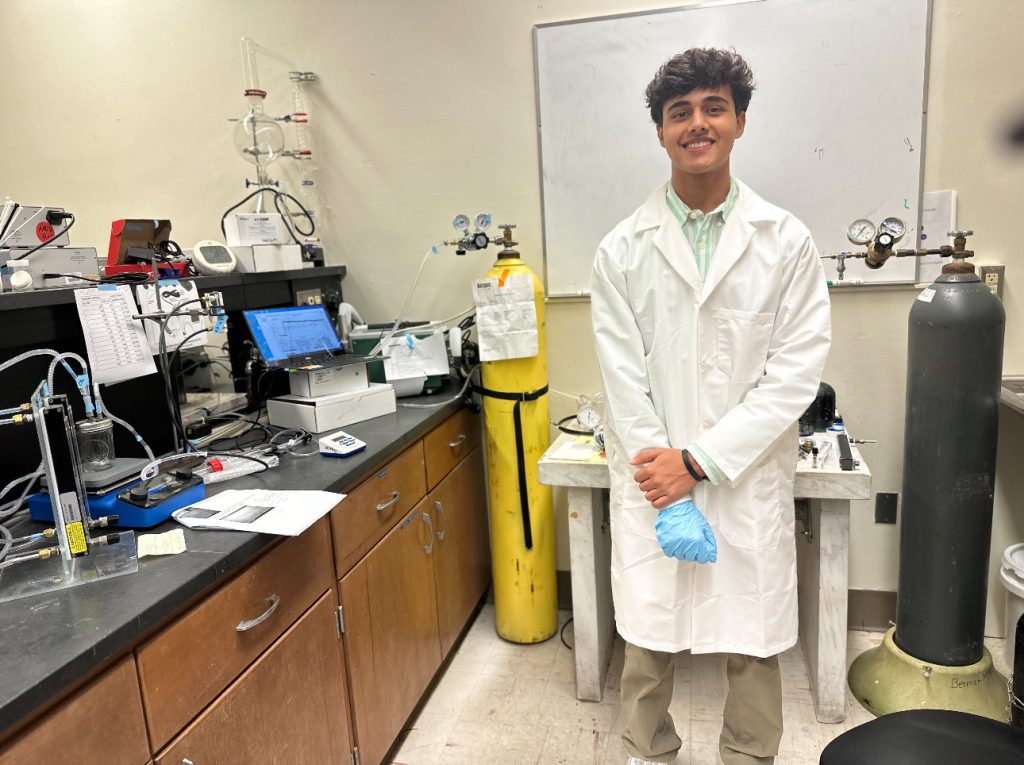
Aakash Manaswi
Now in the ninth grade at Lake Highland Prep School in Orlando, Florida, has been studying bees since he was 10. Last year, he made it to the top 10 of the 3M Young Scientists Challenge, one of them of the most prestigious STEM competitions in the US, for his eco-friendly, non-toxic, carbon dioxide based pesticide against the varroa destructor mite, the largest destroyer of bee hives in the country. From trying out his prototype at a local apiary, to being invited to present his findings at the United Nation’s COP 29 last year, Aakash has come a long way.
Strong foundations
“I have always been really curious, even as a toddler,” he tells me, during a captivating conversation in which I learn more than I ever have before about the fascinating lives of bees. “When I first went to the apiary, I saw that half the hives were empty. When I got home, I googled to see why and the first answer that popped up was varroa mites.”
Born into a STEM-inclined family in Orlando, Florida, Aakash was always full of questions, which his father, a doctor, was only too happy to answer. “My science teachers would go crazy trying to answer all my questions,” he laughs. When his brother, Atreya, who also researches bees, began going to the Bee College in the University of Florida, Aakash would follow him around there. That sparked his own interest in research, which he began by studying a smaller mite before moving on to the varroa destructor.
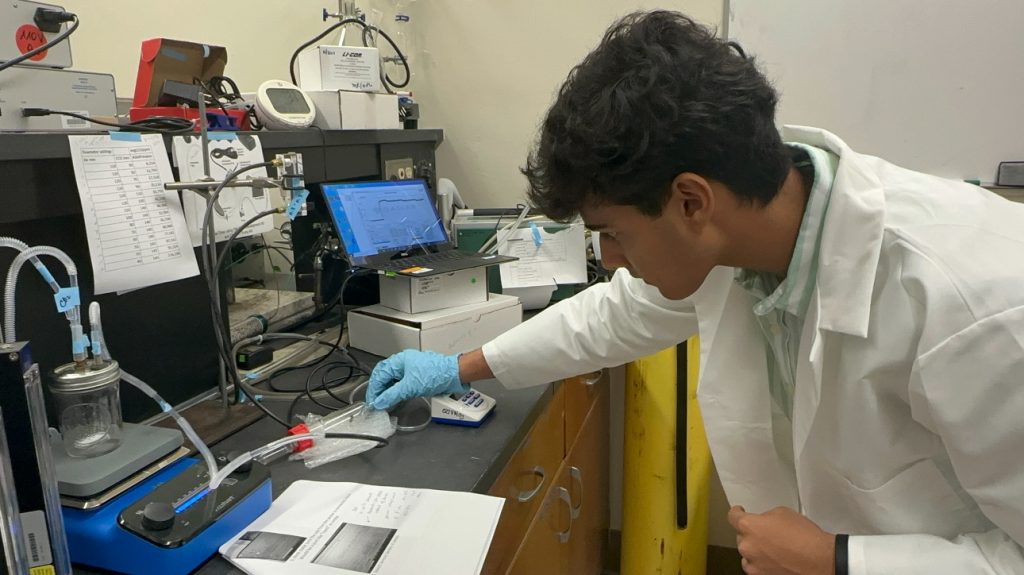

The Varroa Destructor
Aakash even has a custom-made model of a varroa mite, which he holds up as he tells his story. Although these mites aren’t really visible to humans, they’re “about one-third the size of a bee,” he says. In what is undoubtedly a harrowing experience for the hardworking honey bee, the varroa mite attaches itself to the body of its host, and proceeds to feed on its body fats.
Interestingly, varroa mites are native to Asia, and the Asian honeybee is their original host. They were only spotted in the US in 1980s, presumably after having been transported there in bee-keeping equipment or live bees. In 40 years, they have wiped out nearly half the beehives across America. “Sixty years ago, there were six million hives in the US, and now, that number has been reduced to half. In fact, bee decline could be almost completely halted if the threat of varroa mites was stalled.”
Aakash began his research in mid-2023, and two big names figured frequently in his reading – Dr Jamie Ellis and Dr Charles Stuhl, both world renowned entomologists. So, Aakash signed up for a bi-annual conference at the Bee College, where several prominent entomologists usually gather. “I talked to them about how to get started and if I could work in their lab,” he says. Dr Charles Stuhl agreed, and became Aakash’s first mentor.
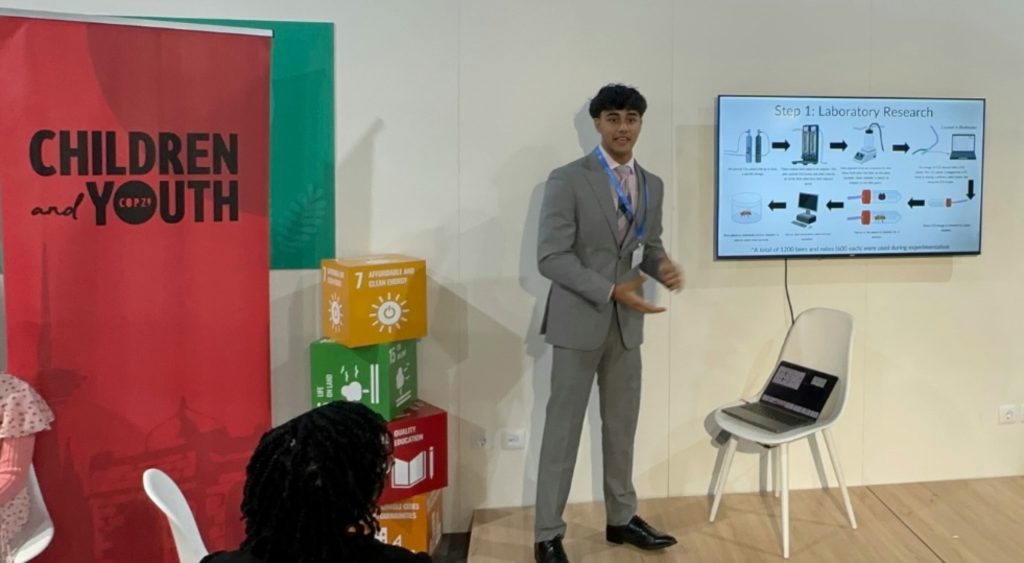

Research with Dr Stuhl
Aakash Manaswi was 10 years old when he tagged along with his brother, Atreya, to local apiary. He was expecting to see fat honeybees at work in hives bursting with honey,
Aakash and his mother would make the 90-minute drive from Orlando to the University of Florida, where Dr Stuhl worked. “This was a year and a half ago, approximately, and I was in eighth grade. My area of research was hypercapnia, or the acidification of hemoland (insect blood,” Aakash explains. He learned that bees have an evolutionary phenomenon of being able to survive high levels of acidification in their bloodstream, which usually occurs on exposure to carbon dioxide. This would become a cornerstone for his work, in his search for an organic, non-toxic pesticide.
Pesticides are common in commercial beehives, a necessary part of the bees’ well-being. The stored honey in hives attracts an assortment of pests, from creatures like the varroa mite, wax moth and the hive beetle, which live inside the hive, to ants and even cockroaches, which enter to feed on the honey. Beekeepers usually choose from commercial options like coumaphos, apivar and amitraz, which are expensive, laborious, time-intensive and toxic. “Coumaphous is known to cause neurological health effects in kids and can accelerate neurodegenerative issues like Parkinson’s,” says Aakash. Moreover, these chemicals accumulate in beeswax and honey—”The fact that we consume this daily is very alarming.” While the honey is filtered before being packaged, this process only works on visible impurities like pollen, and bits of beeswax. “Any further filtration will also remove the positive nutritional aspects of honey,” he says.
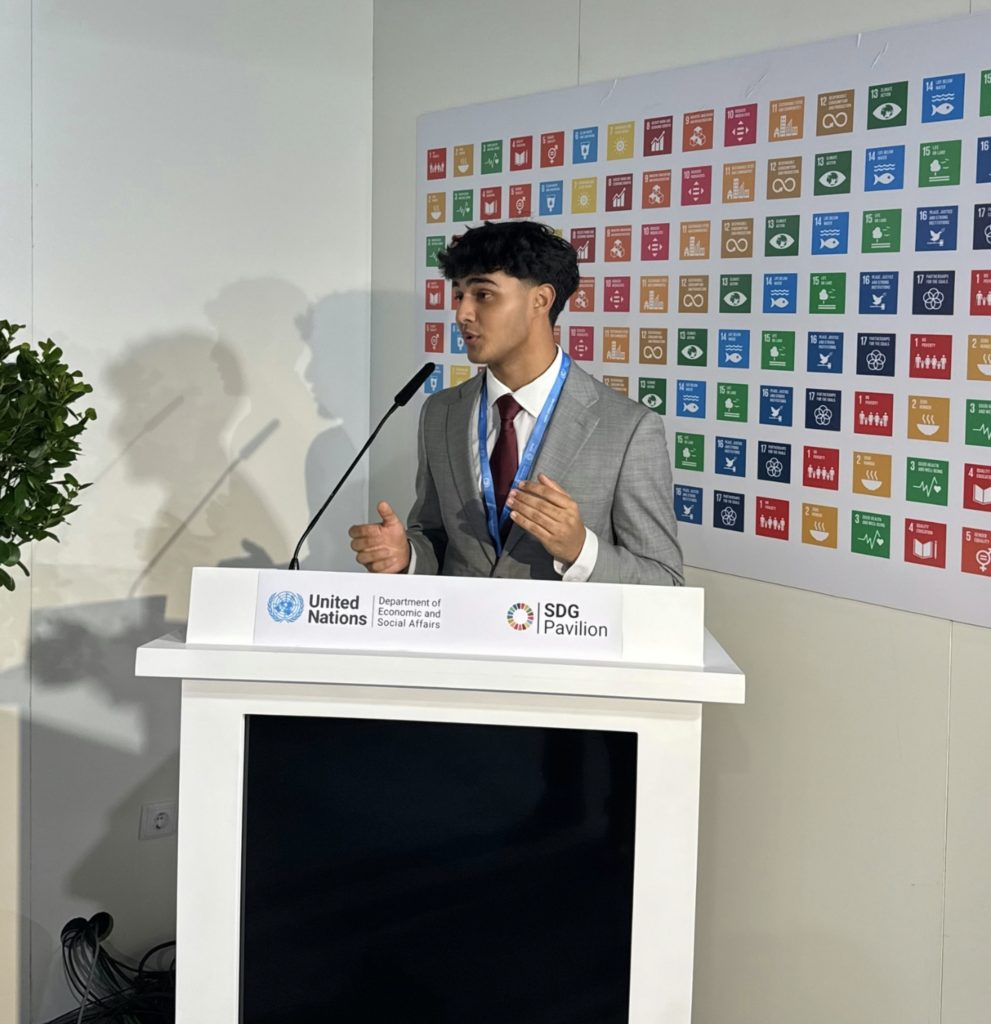

Finding a solution
In Dr Stuhl’s lab, Aakash Manaswi studied the acidification of insect blood, which can happen in the presence of carbon dioxide. “When CO2 is mixed with water, it becomes carbonic acid,” he explains. Bees can withstand very high levels of acidification, and will remain unharmed at levels that can kill varroa mites. Why not use CO2, then, he wondered. It was a radical idea, to say the least. “People called me crazy for even thinking of this,” he laughs. “That includes Dr Stuhl!” Even so, Dr Stuhl was open to the idea, and Aakash began the process of acquiring the CO2.
To Aakash, CO2 seemed like the perfect fit. Pesticides are expensive and Aakash’s solution was “13,559 times cheaper than Apivar, which is the most commonly-used pesticide globally,” he says. “It could save the average commercial beekeeper almost $64,000 per year in the US.” He ran a 50-day long-term effects trial by collecting freshly hatched bees and placing them in an incubator. He used 11 dosages that varied in concentration from 10 percent to 100 percent, in 10 percent increments. “I kept the bees in my back porch and fed them with a feeder tube to see the long-term effects. There was no side effect whatsoever,” he recalls.
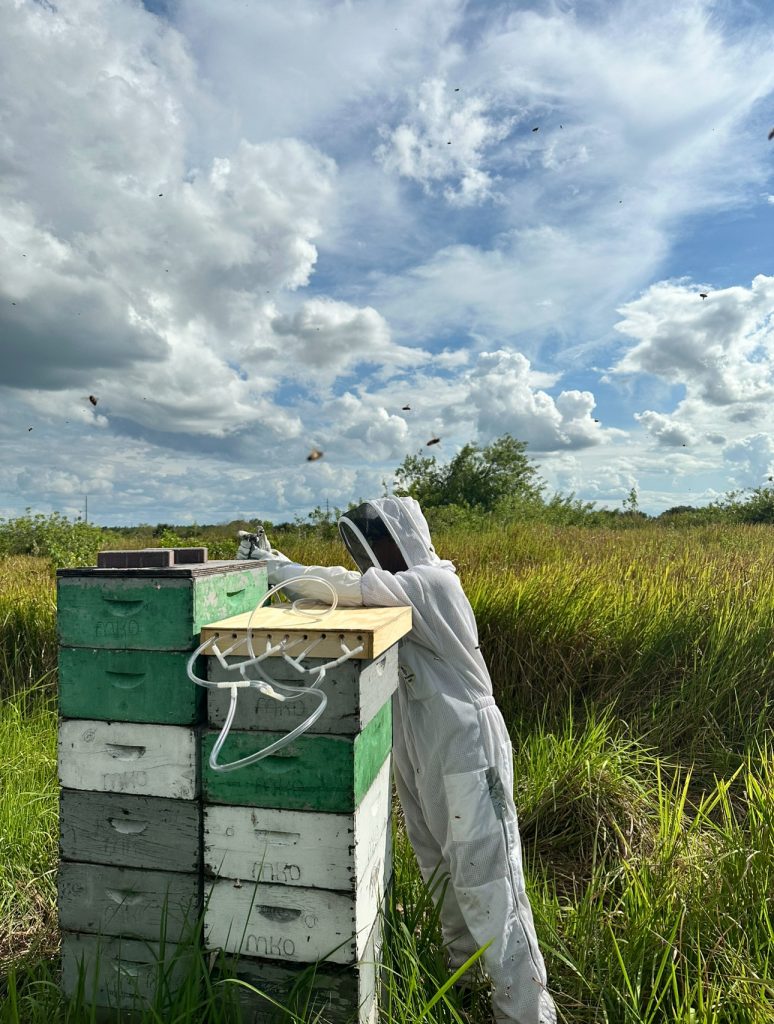

Then came phase three. Aakash signed up for the 3M challenge and was paired with a mentor. He collaborated with a (fairly risk-taking) commercial beekeeper who let him use some hives for research. Organised by Discovery Education in partnership with 3M, it’s one of the country’s top science and engineering competitions for young students and receives thousands of applications annually. Aakash’s research made it through, and he was assigned a mentor to complete his prototype and test it.
The prototype he created is placed on the hive and comes with a ‘flow metre’ which limits the amount of CO2 that comes out of the tank. Nine different tubes go into various hives – in commercial setups, hives are created in stacks of boxes. The CO2 is pumped into the boxes and being heavier than air, sinks right to the bottom.
The solution exceeded their expectations and Aakash emerged as one of the top 10 scientists in the 3M Challenge in 2024. CO2 is cheap, easily available, non-toxic and environmentally friendly. It does not harm the bees, but destroys the varroa mites and maybe even other pests whose blood cannot stand such high levels of acidification. And finally, it does not change the chemistry of the honey itself.
Aakash Manaswi aims to have his prototype patented and put to commercial use. He hopes to study entomology and continue working towards protecting the remarkable ecosystem of honeybees.
- Follow Aakash Manaswi on LinkedIn

